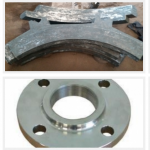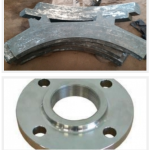How Does the Investment Casting Process Work?
Casting processes are extensively used in different industries. It produces components and products into various complex shapes. Investment casting is a century-old process, also known as lost wax casting. The experienced investment casting manufacturer ensures to do it with precision by implementing the right skills. This way, they guarantee accurate product outcomes as well.
Why is it Known as Investment Casting?
The name is such because the mould pattern utilized in the casting process becomes ‘invested’. This happens with the liquid refractory material. In the other processes, you have to pour liquid material into the mould’s cavity. Investment casting involves surrounding the mould with liquid material. Eventually, the mould becomes invested with the liquid refractory material.
Investment Casting Process
Step 1 – Creating a Pattern
The manufacturer will make the pattern from wax using the metal injection die.
Step 2 – Assembling the Wax Patterns
Once you create the pattern, you will have to assemble it with other components to create the gate and runner metal delivery. This is necessary to create the casting.
Now, depending on the configuration of the finished component, you can process multiple wax patterns in one tree.
Step 3 – Mould Shell
After assembling the wax pattern, you have to dip it in a ceramic slurry. Then cover it with sand stucco before giving it ample time to dry. Sometimes, they repeat the wet dripping and stuccoing cycles to get the shell thickness. Once the ceramic shell dries, it becomes strong to retain the molten metal during the casting process.
Step 4 – Wax Removal
The assembled items are put inside the steam autoclave to melt the wax. If there is any remaining wax, they will burn it out in a furnace. After removing all wax, the cavity is made with the desired shape.
Step 5 – Melting and Casting
They preheat the mould to a certain specific temperature. Then they fill it with molten metal, creating the desired metal casting.
Step 6 – Final Touches
After cooling down the casting, the manufacturers break the mould shell from the casting in a knockout operation. If required, they cut the gates and runners from the casting. Sometimes, they sandblast, ground or machine it to finish the casting dimensionally.
Benefits of Investment Casting
• Smoother finish
• Faster production
• Vast size range
• Affordable tooling
• Material variety
• Tight tolerance
Visit the website of Houston (India) Private Limited to know more about investment casting. We are a well-recognized casting manufacturer, fully equipped with the latest tools and infrastructure.




